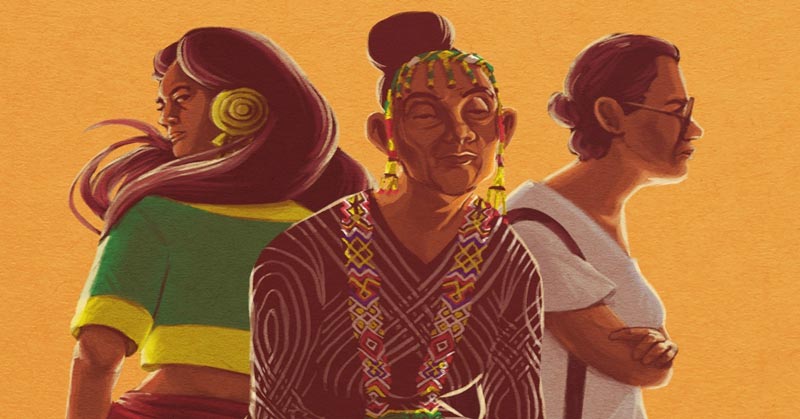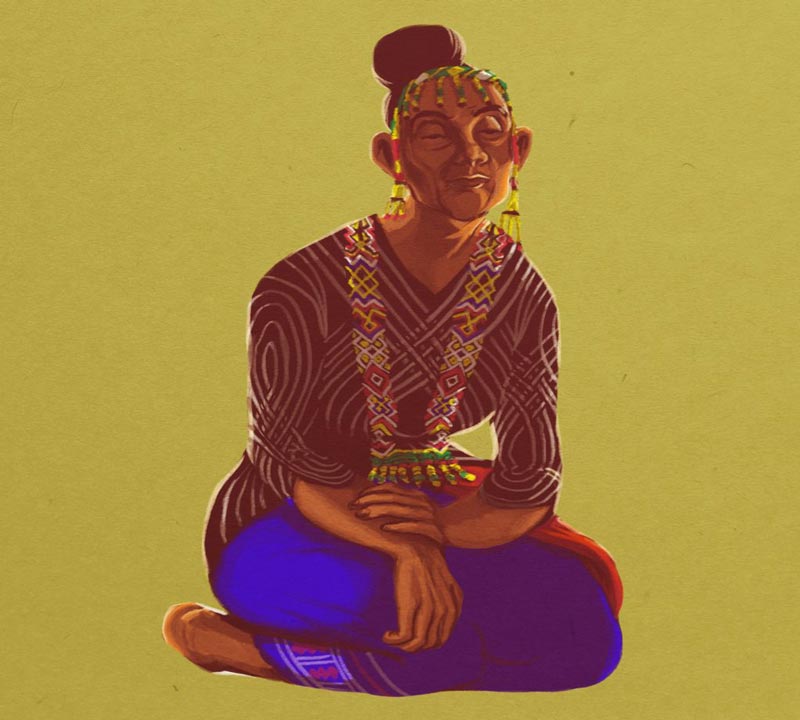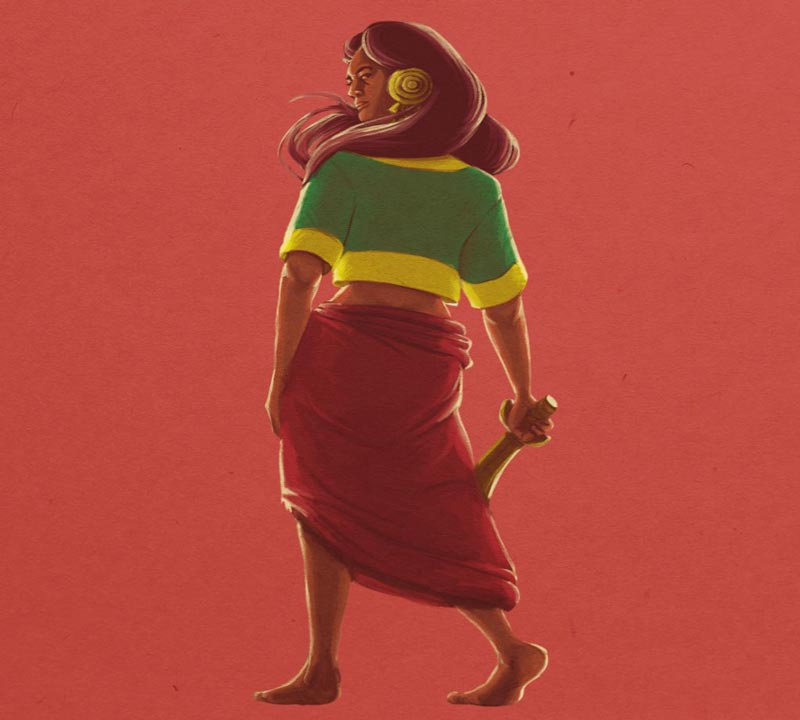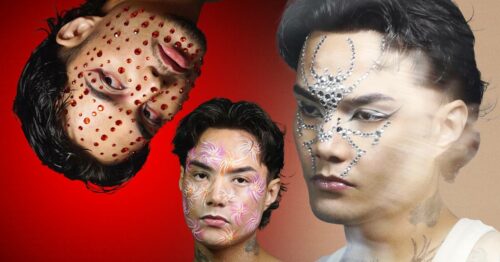A reminder that women were revered as important pillars in Philippine history
The future is female (say it a little louder for the people in the back please) is a phrase that was first found on a t-shirt meant to promote Labyris Books, the first women’s bookstore in New York City, in 1972. Today, it’s taken on a life of its own. As a forward-thinking mantra, it’s the resounding “hell-fucking-yeah” that calls for women’s rights, equality and the empowerment of women all of whom can lead, innovate and (not to boast but) run the world.
This reform that women all over the world are aching for is something that the Philippines had already achieved—until we were colonized, that is.
We have our colonizers to thank for a number of things: “discovering” a country that already had inhabitants, imposing their religious beliefs and systems on the “uncivilized” locals. You get the picture. We also have them to thank for the Maria Clara archetype. For a long while, she was the epitome of the perfect Filipina: demure, delicate, feminine…submissive.
We definitely aren’t talking about Maria Clara here.
History dictates that before colonizers came along, Filipino men and women were already treated as equals in society. Women were able to assume leadership roles. They were warriors fighting side by side with men. They ran the household, handled the finances and were actively engaged in trade and industry. There were female religious leaders and female healers. Daughters of datus were even eligible heirs in the line of succession in the pre-colonial period.
These are just some of the rights and capabilities the Filipina had in our history. Here, illustrator Nina Martinez depicts some of the fascinating Pinays who will make you proud that the past was female and work harder to ensure that the future is, too.
The Babaylan
These spiritual healers from the Visayas were revered members of society and were mostly women. They were healers of the sick and shamans who led sacred rituals and proof that the Filipino, early on, had an understanding of spirituality. “The babaylan is a medium between heaven and earth, who heals, exorcises and restores harmony to her community. Her path begins with a mysterious call,” explains UP Visayas Arts & Humanities professor Joycie Alegre. “She must decide whether to be a sorceress, a healer or a combination of both, and return to earth to fulfill her mission. She [must then make] a ‘panata—a vow, a pledge, a sacrifice or an offering,’ and then becomes a full-fledged babaylan.”
Even our colonizers not only understood the wrath and power of the babaylan, but feared it, too. In Relacion de las Yslas Filipinas, explorer Miguel de Loarca described the babaylan as a native priestess who “invokes the demon, who appears to her all glistening in gold. Then he enters her body and hurls her to the ground, foaming at the mouth as one possessed,” the mere sight of which frightened the colonizers. Conquistador would go on to recount that Filipino women were by far the most defiant and most powerful opposition to religious conversion.
Princess Urduja
Urduja, a warrior princess hailing from Tawalisi, Pangasinan, was said to be a fierce fighter entrusted with overseeing most of their kingdom. She was also known to have commandeered an army of highly trained Filipina warriors riding on horseback.
Legend has it that Princess Urduja responded to her many suitors with this prerequisite: “I will marry only the man who can defeat me. My husband must be braver, stronger, and wiser than myself.” As no one was deemed worthy enough, Urduja remained unmarried.
Captain Nieves Fernandez
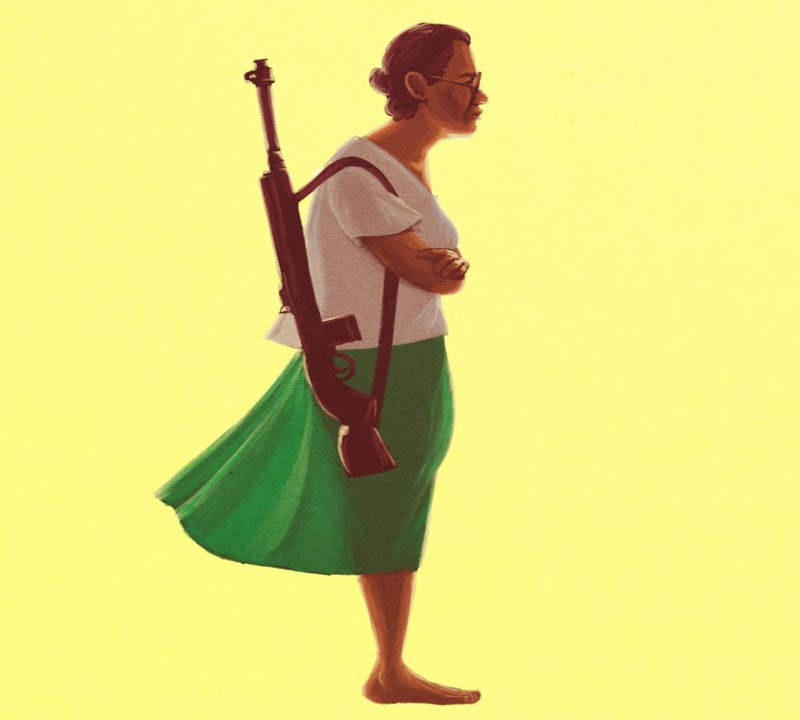
Nieves Fernandez went from schoolteacher to the only known Filipino female guerrilla leader during the Japanese occupation in World War II. She commanded the “gas-pipe gang” of Leyte comprised of 110 natives who killed 200 Japanese with shotguns made from parts of gas pipe. Most know her not by name, but by the iconic photo taken by Stanley Troutman in 1944. The image shows Fernandez holding a bolo to the neck of US Army Pvt. Andrew Lupiba as she explains to him how she killed the Japanese soldiers silently.
Equal rights were the norm. Now they’re something we hope to achieve again and must fight for. This might be one of the rare instances we hope that history repeats itself. Meanwhile, the next time someone barks at you, young lady, for not aligning yourself with “traditional Filipino values,” ask them which tradition…then tell them about this one.
Illustrations by Nina Martinez


